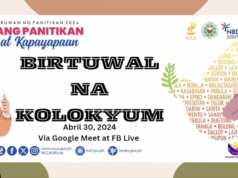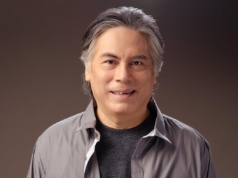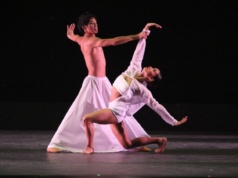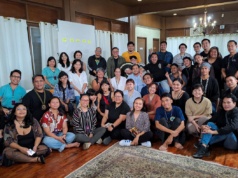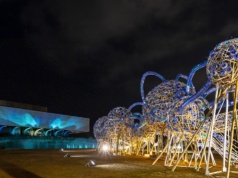by Ma. Isabel Ongpin | March 9, 2018 | The Manila Times
SHORTLY before he died at the age of 91, Miguel Perez Rubio, Protocol Officer at Malacañan Palace to the two Aquino presidencies, wrote his memoirs, Nine Lives: The Reminiscences of Miguel A. Perez Rubio (Vibal Group, 2017). It was published and launched in October last year. By that time, he had passed away.

(Vibal Group, 2017)
Perez Rubio’s memoirs encompass the pre-war period from the 1930s (Perez Rubio was born in 1925 in Manila) to 1945 when World War 2 ended. These remembrances include travel to Europe and the US in those years before the great conflict of World War 2 broke out and the onset of the Spanish Civil War which he describes with the eyes of a pre-teen. While traveling in Spain, the Perez Rubio family was caught in the initial phase of the Spanish Civil War from which they had to flee as refugees to France (St. Jean de Luz) before returning to Manila. The book therefore gives us a youth’s take on how Europe and the Philippines were in the 1930s. This is interesting enough as a narrative of places, incidents, reactions that his family experienced while history was in the making.
But the most riveting part is Perez Rubio’s narration of his experience of World War 2 in the Philippines when he became a 19-year-old guerrilla, was incarcerated and tortured by the Kempeitai in Baguio towards war’s end, and became the sole survivor (except for an Assumption nun) of the Perez-Rubio family. The entire family was massacred by Japanese Imperial Marines during the Battle for Manila in February 1945 in their Vito Cruz home while he was in prison in Baguio. There is more, a postwar reminiscence of traveling to Cairo in the midst of political tumult in 1952 and a brief residence in Mexico in the late 1950s. But the more important part is what Manila and Philippine society was like during and in the aftermath of World War 2.
This is a personal account of that experience in the Philippines which is valuable as history that must be remembered, memories that must be saved and transmitted to the next generation to precipitate an analysis and reflection of how and why the events occurred. It is indeed Philippine history and reminiscence, a look into the recent past that was to leave a mark on the future even if today’s generations are oblivious. Those who lived through it may have tried to forget or put aside the pain and suffering that came with it. And they succeeded for decades until with courage to live and narrate the truth slowly their narratives emerged. Among these are Breaking the Silence by Lourdes Montinola, Sleeping with the Enemy by Pacita Pestaño, By Sword and by Fire by Alfonso Aluit, the two Occupation books of Benito Legarda, Jr., plus a welter of guerrilla accounts of the times.
There are also scholarly articles juxtaposed with personal accounts detailing the everyday conditions and events during the Japanese Occupation from the invasion, to the entrance of the invaders into Manila, for which it was declared an open city, the grim days in Bataan, the fall of Corregidor, guerrilla warfare, violations of human rights by the conqueror and finally the end-of-war atrocities that have been so extensive, so inhumane, so unbelievable that they remain in the racial memory of the Filipinos who lived then. Memories must be understood, analyzed and put in context. All of these make up identity because they belong to those who have them, know them and are influenced by them whether consciously or unconsciously.
In the case of Perez Rubio, here was a youth of comfortable means who was driven to become a guerrilla from the violence and cruelly expressed dominance of the occupying Japanese forces. In those perilous times, parents were no longer in control of their environment or their children under the overhang of insecurity and fear. Individuals, even youths, did what they were driven to do in orthodox or unorthodox ways.
Miguel Perez Rubio, against his family’s wishes, enlisted and took his oath as a guerrilla and began to live a life of clandestine doings during the Japanese Occupation. From joining guerrillas in the mountains, to trying to bring General Manuel Roxas to safe haven and finally landing in Baguio where in time he was imprisoned, it is an extraordinary story that has the clear aspects of historical context.
In prison from January to April 1945, Perez-Rubio had a dream on February 12 where his second brother, Javier, tells him “I am dead.” Weeks later someone in Baguio tells him that his whole family has been killed but his friends dissuade him from believing it. The truth is too painful to accept even by bystanders. But a few more weeks later, someone comes to him with the specific mission to tell him what he needs to know which is the truth. They were indeed killed on February 12, 1945.
For many years, he has unsettling dreams, sudden depressions, and has to go to a psychotherapist. Finally, he moves on to civilian life and building a family. But he carries the burden of what he experienced. This may be one man’s story but it is also the story of many more. That is why those who lived it, have the scars, the consequences, maybe the resilience and the courage that can come with it. And the tragedy.
Filipinos who lived through World War 2 bear the marks that are part of their identity which in time they should understand and bravely accept and eventually define their own courageous reactions to. It is the history of humanity exemplified in one country just as in other ways it is also true of other countries and their histories. History is not a fairy tale with a happy ending.
I was especially interested in Perez Rubio’s accounts of Baguio in World War 2 when it was a quiet, mountain city that war destroyed through false information that it was the military headquarters of the enemy in the north. That failure of intelligence precipitated carpet bombing and the loss of many civilian lives, mostly from the fire of the liberators.
In jail, Perez Rubio meets a certain Ramon Laconico, a graduate of the Philippine Military Academy, a Death March survivor and his mentor and companion in prison. When both are released, Laconico and his family try to make their way to the American lines in the lowlands from Baguio. In the mountains on the way down, an American shell hits him and he dies from gangrene.
War is indeed hell for all – the antagonists, bethey victors, or vanquished, and the people caught in between.
That is the most important lesson that all the experiences, the reminiscences and the memories of conflict should bring. If the lesson is learned, maybe armed conflicts would become a thing of the past.

